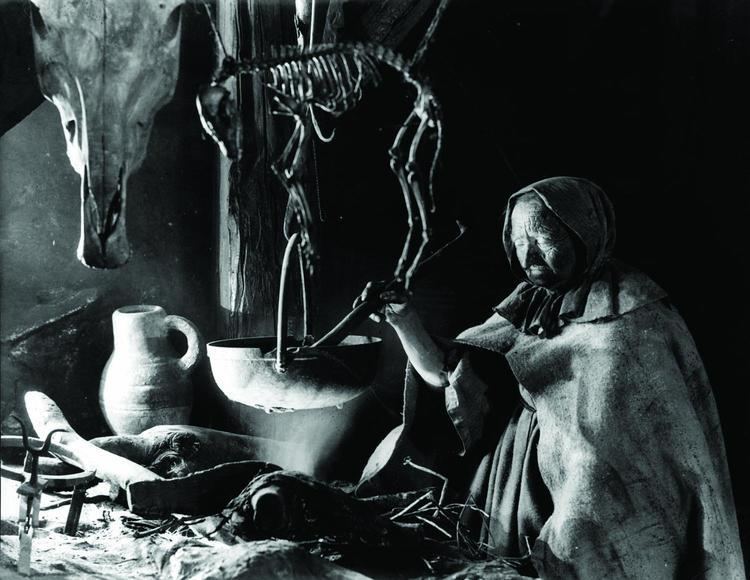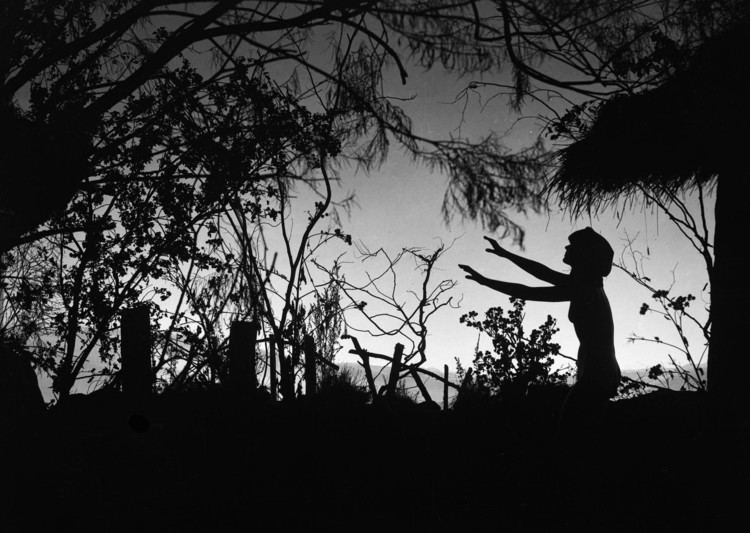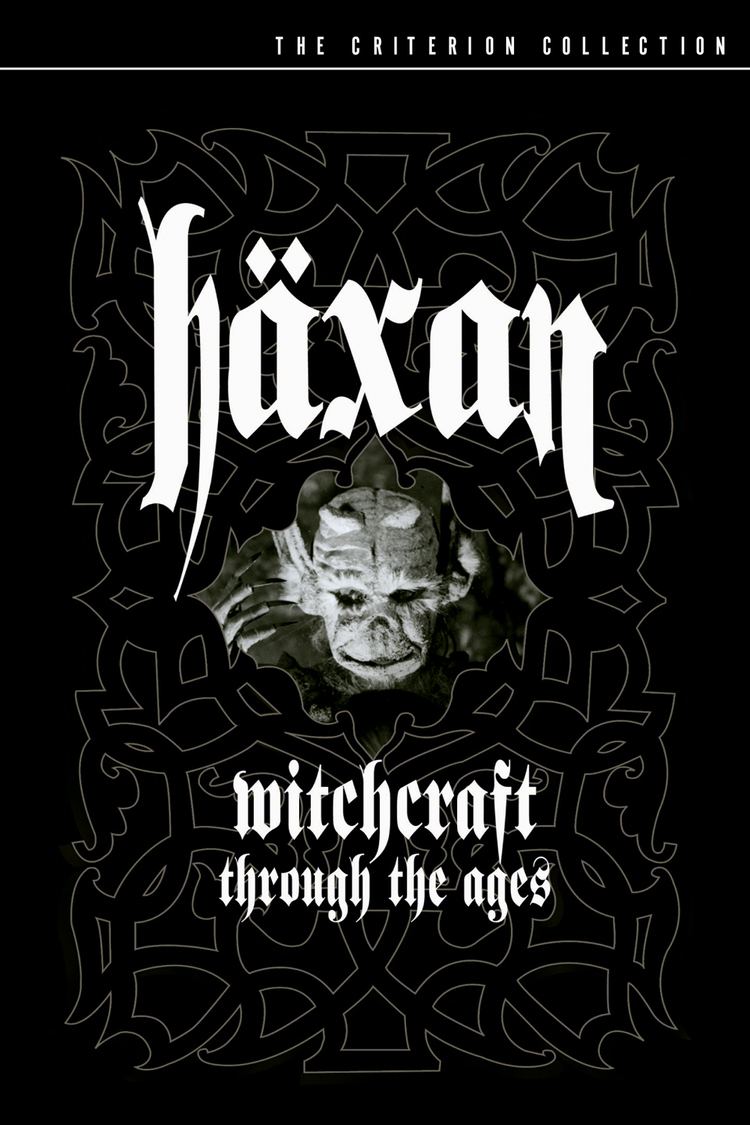Häxan
8.2 /10 1 Votes8.2
88% Rotten Tomatoes Genre Documentary, Horror Country SwedenDenmark | 7.7/10 IMDb Duration | |||||||||||||||||||||||||||||||||
 | ||||||||||||||||||||||||||||||||||
Release date 18 September 1922 (1922-09-18) (Sweden) Initial release September 18, 1922 (Sweden) Music director Ludwig van Beethoven, Barði Johannsson, Art Zoyd, Matti Bye, Launy Grondahl, Daniel Humair, Emil Reesen Cast (The Young Monk), (The Fat Monk), Maren Pedersen (The Witch), (The Nun), (Modern Hysteric), Benjamin Christensen (The Devil)Similar movies Harry Potter and the Order of the Phoenix , Hansel & Gretel: Witch Hunters , The Blair Witch Project , The Craft , The Haunted Hotel , The Haunted Curiosity Shop | ||||||||||||||||||||||||||||||||||
Häxan (Danish title: Heksen; English title: The Witches or Witchcraft Through the Ages) is a 1922 Swedish-Danish documentary-style silent horror film written and directed by Benjamin Christensen. Based partly on Christensen's study of the Malleus Maleficarum, a 15th-century German guide for inquisitors, Häxan is a study of how superstition and the misunderstanding of diseases and mental illness could lead to the hysteria of the witch-hunts. The film was made as a documentary but contains dramatised sequences that are comparable to horror films.
Contents

With Christensen's meticulous recreation of medieval scenes and the lengthy production period, the film was the most expensive Scandinavian silent film ever made, costing nearly two million Swedish kronor. Although it won acclaim in Denmark and Sweden, the film was banned in the United States and heavily censored in other countries for what were considered at that time graphic depictions of torture, nudity, and sexual perversion. It is now considered to be Christensen's finest work.

Part 1

A scholarly dissertation on the appearances of demons and witches in primitive and medieval culture, a number of photographs of statuary, paintings, and woodcuts are used as demonstrative pieces. In addition, several large scale models are employed to demonstrate medieval concepts of the structure of the solar system and the commonly accepted depiction of Hell.
Part 2

A series of vignettes theatrically demonstrating medieval superstition and beliefs concerning witchcraft, including Satan (played by Christensen himself) tempting a sleeping woman away from her husband's bed and terrorizing a group of monks. Also shown is a woman purchasing a love potion from a supposed witch, and a sequence showing a supposed witch dreaming of flying through the air and attending a witches' gathering.
Part 3

A long narrative broken up into several parts; set in the Middle Ages, it concerns an old woman accused of witchcraft by a dying man's family. The narrative is used to demonstrate the treatment of suspected witches by the religious authorities of the time. The old woman, after being tortured, admits to heavy involvement in witchcraft, including detailed descriptions of a Witches' Sabbath, even going so far as to "name" other supposed witches, including two of the women in the dying man's household. Eventually, the dying man's wife is arrested as a witch when one of the clergymen accuses her of bewitching him.
Part 4
The final part of the film seeks to demonstrate how the superstitions of old are better understood now. Christensen seeks to make the claim that most who were accused of witchcraft were possibly mentally ill, and in modern times, such behavior is interpreted as a disease. His case revolves around vignettes about a somnambulist and a kleptomaniac, the implication being that these behaviors would have been thought of as demonically-influenced in medieval times whereas modern societies recognize them as psychological ailments. There is heavy irony, however, in the observation that the "temperate shower of the clinic" i.e. the treatment of "hysterical women" in a modern institution, has replaced medieval solutions such as burning at the stake.
Cast
Source:
Production
After finding a copy of the Malleus Maleficarum in a Berlin bookshop, Christensen spent two years—from 1919 to 1921—studying manuals, illustrations and treatises on witches and witch-hunting. He included a lengthy bibliography in the original playbill at the film's premiere. He intended to create an entirely new film rather than an adaptation of literary fiction, which was the case for films of that day. "In principal [sic] I am against these adaptations... I seek to find the way forward to original films."

Christensen obtained funding from the large Swedish production company Svensk Filmindustri, preferring it over the local Danish film studios, so that he could maintain complete artistic freedom. He used the money to buy and refurbish the Astra film studio in Hellerup, Denmark. Filming then ran from February through October 1921. Christensen and cinematographer Johan Ankerstjerne filmed only at night or in a closed set to maintain the film's dark hue. Post-production required another year before the film premiered in late 1922. Total cost for Svensk Film, including refurbishing the Astra Film Studio, reached between 1.5 and 2 million kronor, making Häxan the most expensive Scandinavian silent film in history.
Release
The film premiered simultaneously in four Swedish cities—Stockholm, Helsingborg, Malmö and Gothenburg—on 18 September 1922, something very unusual in Sweden at the time. The release length was 2506 metres (which equals 122 minutes at 18 fps, which was the intended frame rate, and 91 minutes at today's 24 fps). It received its Danish premiere in Copenhagen on 7 November 1922.
Reception
Academic James Kendrick writes that initial reviewers of Häxan "were confounded by [its] boundary-crossing aesthetic." Its thematic content stirred controversy as well. A contemporary critic in Variety, for example, praised the film's acting, production, and its many scenes of "unadulterated horror", but added that "wonderful though this picture is, it is absolutely unfit for public exhibition." A Copenhagen reviewer was likewise offended by "the satanic, perverted cruelty that blazes out of it, the cruelty we all know has stalked the ages like an evil shaggy beast, the chimera of mankind. But when it is captured, let it be locked up in a cell, either in a prison or a madhouse. Do not let it be presented with music by Wagner or Chopin, [...] to young men and women, who have entered the enchanted world of a movie theatre." Conversely, a critic for The New York Times wrote in 1929, "The picture is, for the most part, fantastically conceived and directed, holding the onlooker in a sort of medieval spell. Most of the characters seem to have stepped from primitive paintings." The film also acquired a cult following among surrealists, who greatly admired its subversion.
In the years since, Häxan has become regarded by critics and scholars as Christensen's masterpiece. In PopMatters, David Sanjek wrote, "The dazzling manner in which Haxan shifts from illustrated lecture to historical reenactment to special effects shots of witches on their broomsticks to modern-dress drama pointed to ways the documentary format could be used that others would not draw on until years into the future." Peter Cowie similarly argued in Eighty Years of Cinema that it established Christensen as "an auteur of uncommon imagination and with a pictorial flair far ahead of his time." Time Out London called it a "weird and rather wonderful brew of fiction, documentary and animation". Film critic Leonard Maltin awarded the film three out of a possible four stars, lauding it as "visually stunning" and "genuinely scary". He additionally praised the director's performance as Satan. On review aggregator Rotten Tomatoes, the film currently has an 88% approval rating, with an average rating of 7.4/10, based on 16 reviews.
Re-releases
The film was re-released in 1941 in Denmark with an extended introduction by Christensen. The intertitles were also changed in this version.
In 1968, an abbreviated version of the film (77 minutes as opposed to the original's 104 minutes) was released, entitled Witchcraft Through the Ages. This version featured an eclectic jazz score by Daniel Humair (played by a quintet including Jean-Luc Ponty on violin and Daniel Humair on percussion) and dramatic narration by William S. Burroughs.
On October 16, 2001, Häxan was released on DVD by The Criterion Collection. This release features a restored print of the original version of the film, as well as the 1968 Witchcraft Through the Ages version. Also featured are extensive production notes, a re-recorded musical score, commentary by Danish film scholar Casper Tybjerg, a gallery featuring the images used in the film's first section, and the introduction Christensen recorded for the 1941 re-release.
The film was also released on Region 0 DVD by Alpha Video on September 1, 2015.
Soundtracks
The film has had several different soundtracks through the years. When it premiered in Sweden, it was accompanied by a score compiled from preexisting compositions. Details of the selection, which met with the director's enthusiastic approval, have been lost. It is probable, but not certain, that it was the same music as for the Copenhagen premiere two months later, which is known. In Copenhagen it was played by a 50-piece orchestra, and the selection, combining pieces by Schubert, Gluck, and Beethoven, has been restored and recorded with a smaller ensemble by arranger/conductor Gillian Anderson for the 2001 Criterion Collection DVD edition.
It has been claimed that Danish composer and conductor Launy Grøndahl, as well as Emil Reesen composed the film's original score, but this has never been verified.
In 2007, two new soundtracks for the film were composed in Britain. One was by the British composer and performer Geoff Smith, to be performed on the hammered dulcimer. Smith performed the soundtrack throughout the UK in 2007. The other was by the British group Bronnt Industries Kapital, and was also performed throughout the UK and Europe in 2007. A DVD of the film featuring both soundtracks was released by Tartan Films on September 24, 2007.
A third soundtrack to be recorded and released in 2007 was a score commissioned from silent film composer Matti Bye by the Swedish Film Institute. This soundtrack is featured on the DVD release of the most recent restoration of the film, made by the Swedish Film Institute.
Barði Jóhannsson of Bang Gang made a symphony over the silent film with the Bulgarian Chamber Orchestra. The Häxan Score was released on CD in 2006.
The French experimental music group Art Zoyd also created a soundtrack that was released on CD in 1997. This work was commissioned by the City of Copenhagen, the European Union designated Cultural Capital of Europe 1996. Art Zoyd members Gérard Hourbette and Thierry Zaboïtzeff composed the soundtrack.
The American film scoring ensemble The Rats & People Motion Picture Orchestra premiered its new score for the film at the 2010 St. Louis International Film Festival.
A new soundtrack from the Dublin Film Ensemble was commissioned by the Horrorthon Festival in 2014 for presentation in the Irish Film Institute.
Scenes from Haxan were used in the music video for Post-Punk band Future of the Left's song "You Need Satan More Than He Needs You".[1]
